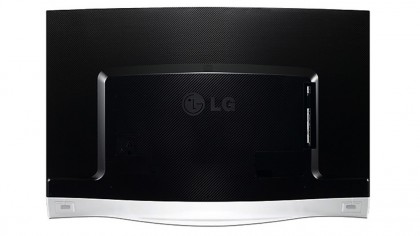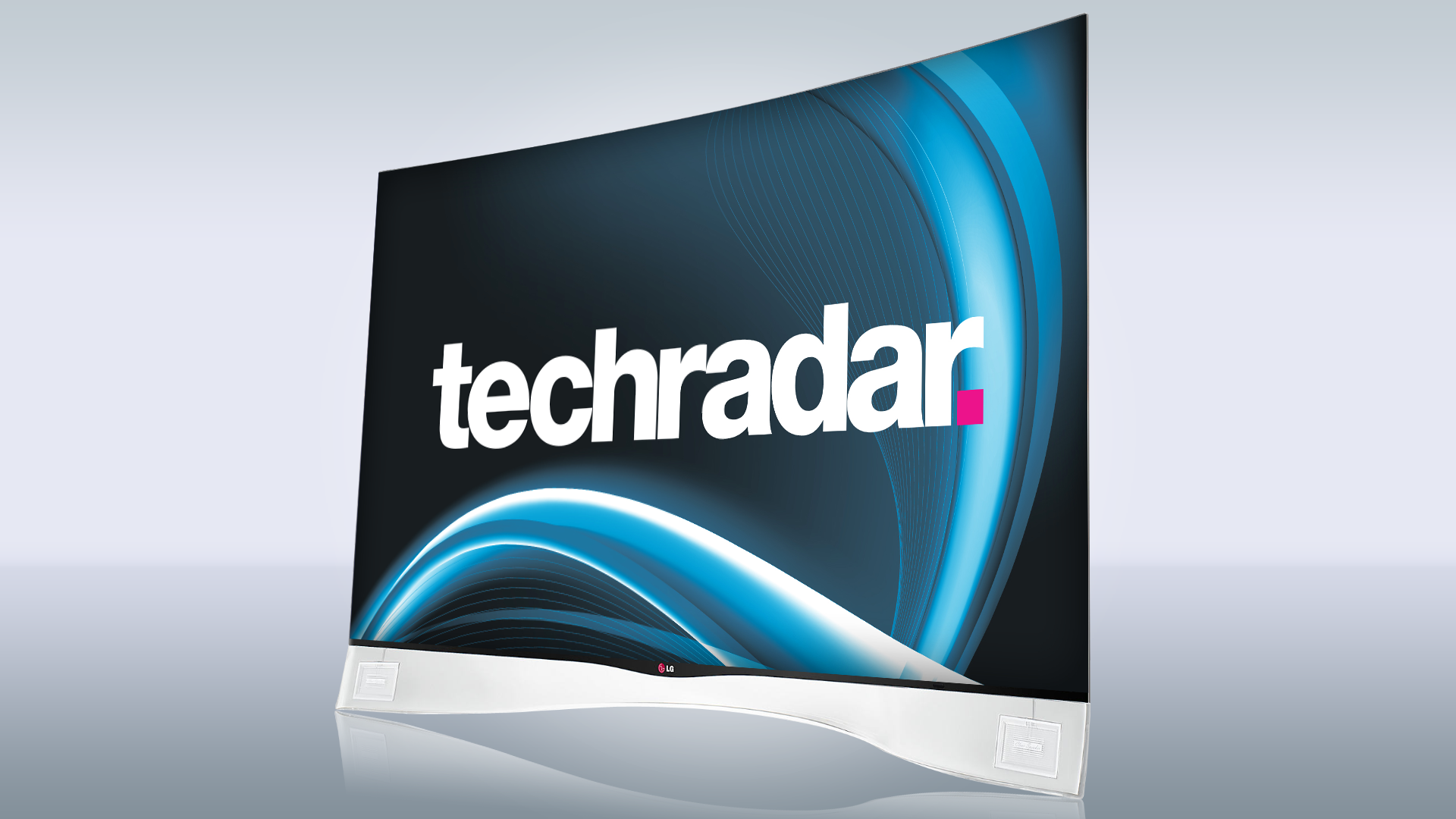Why you can trust TechRadar
After so many years of hype, surely it's going to be physically impossible for OLED to live up to our hopes at the first time of asking? Actually, no. It's not impossible at all. In fact, the 55EA9800 makes magical pictures look like the easiest thing in the world.
There are so many strong points to its pictures that it's initially hard to try and break them down into their constituent parts to see what's making them tick. But once I'd taken on board the fact that basically pretty much everything works better with OLED, I was finally able to start getting somewhere.
For me, the first thing I always look at when testing a flat panel TV is black level response, as this has tended to be where non-CRT technologies have most struggled to get to grips with the requirements of video (as opposed to PC) playback. And to say the 55EA9800 knocks it out of the park in this critical imaging department would be a colossal understatement.
Black to the future
Essentially, where a dark scene should look pretty much totally black, on the 55EA9800 it really looks pretty much totally black. The grey wash that pervades pretty much every LCD TV technology to some extent is gone, leaving dark scenes looking instantly more believable, immersive and dynamic.
Even better, the 55EA9800's extraordinary black levels are so naturally and locally created – right down to individual pixel level – that they don't in any way lead to the sort of severe reduction in shadow detail you have to suffer with normal LED TVs when they try and deliver a half-decent black level. This pixel-level luminance control helps dark scenes look as deep and detailed as bright ones, making it much easier to get truly lost in films that contain lots of dark content.
There's still more to be said about the 55EA9800's contrast performance, too. For instance, OLED's ability to deliver pixel-level luminance precision means there's no need for a dynamic contrast system, so pictures tend to look much more stable in brightness terms than those you get with the dynamic contrast engines found – and often required – on normal LED TVs.
OLED's lack of an 'external' light source like edge LED arrays means too that you don't have to worry about the sort of backlight clouding problems routinely witnessed with edge LED and even (to a lesser extent) direct LED TVs.
Colours
Good black levels are often connected with good colours. So it follows that the colours on a screen with black levels as stunning as those on the 55EA9800 should be nothing short of magnificent. And so it proves. The punch and dynamic range of the colour palette on show is a joy to behold, injecting life into tried and trusted test discs that we'd never really realised was there before.
This is not over-saturated 'show off' colour performance, though. There's no sense of colour tones being out of whack or lacking in tonal subtlety and nuance. In fact, the sheer range of colour OLED can handle actually makes colours look more natural rather than less, for all their extra punch.
This fact combines with the imperious black level response and a mesmerisingly intense luminance output, meanwhile, to ensure that subtle deep colours curing dark scenes look as natural as their bright scene counterparts – something normal LED and even plasma TVs can find notoriously difficult to deliver.
Sharpness
Yet more good news – though there is a little twist to this one – concerns the 55EA9800's sharpness. OLED's self-emissive approach means the LG's pictures are almost completely free of the motion blur and lag problems associated with normal LCD technology. Moving images look more or less as crisp as stationary ones – something which inevitably helps the screen do full justice and then some to high quality HD sources.
There's a tiny bit of judder around, but it's not heavy. And since it's not heavy, if the judder bothers you, it can be tackled quite nicely by LG's built-in motion processing system as it isn't having to work as hard as it does with non-OLED screens.
The 55EA9800 caps its exhibition of OLED's glories with its viewing angle, which is pretty much limitless in the extent to which you can move down the screen's sides without colour or contrast taking a hit in the way they do quite quickly with LCD TVs.
And as for that curve…
There is a separate limiting factor on the 55EA9800's useful viewing angle range, though: the screen's curve. For if you sit far enough down the side – more than 40 degrees or so – the curve clearly starts to affect the image's geometry, foreshortening content near to you and compressing the image's centre. As well as making the top corner furthest from you seem to bulge out.
Obviously none of this is desirable. However, to be fair to the 55EA9800's curve, if you're sat roughly opposite the centre of the screen and not too far away, the way the image gently bends at its edges does strangely make the picture feel slightly more '3D' even when you're only watching in 2D, and also creates the sensation that it's filling slightly more of your field of vision.
What's more, thankfully we found that the rather gentle level of curvature used by the 55EA9800 didn't make the 'sweet spot', from where the curvature doesn't start to negatively affect the image, as small as we'd feared it might.
Overall, while I remain sceptical that curving a 55-inch TV is in any way necessary or even helpful, at least my experience with the 55EA9800 hasn't inspired any genuine curve hate in me.

3D performance
One last element of the 55EA9800's picture performance to consider is its 3D playback. And once again it is, for the most part, a resounding success.
OLED's intense brightness naturally provides a great foil for any dimming caused by donning one of the four free pairs of 3D glasses you get with the TV, and the immaculate contrast the 55EA9800 can deliver helps it deliver an unusually precise sense of 3D depth, especially during dark scenes.
Motion looks much less juddery than it tends to with most TVs' 3D playback too, colours lose none of their intensity, and best of all there's practically no crosstalk ghosting noise to worry about so long as you follow the usual passive 3D rule of not watching from a viewing angle more than around 13 degrees above or below the screen.
The only issue I have with the 55EA9800's 3D efforts, in fact, concerns passive 3D's habit of reducing the resolution of native HD 3D sources. Passive 3D's usual issues of jagged curved edges, occasional visible line structure and slight softness with 3D sources seem exaggerated by the gorgeous qualities of OLED's basic picture quality.
No 4K
Actually, having mentioned the slight sense of resolution loss with 3D caused by the use of the passive format, we might as well talk briefly about that other resolution elephant in the room: 4K. Or the lack of 4K where the 55EA9800 is concerned.
This does mean that for all the quality OLED makes possible the 55EA9800 simply can't deliver the same detail and texture levels as native 4K TVs can when fed native 4K content. Which is something we just can't ignore now that 4K is really starting to gain traction in the AV world (despite the continuing lack of native 4K content).
Still, while the idea of what 4K OLED might do to the home entertainment world is almost too exciting to contemplate, the fact that the 55EA9800 delivers such amazing picture quality even without being 4K is itself a pretty resounding endorsement of OLED's capabilities.
John has been writing about home entertainment technology for more than two decades - an especially impressive feat considering he still claims to only be 35 years old (yeah, right). In that time he’s reviewed hundreds if not thousands of TVs, projectors and speakers, and spent frankly far too long sitting by himself in a dark room.

